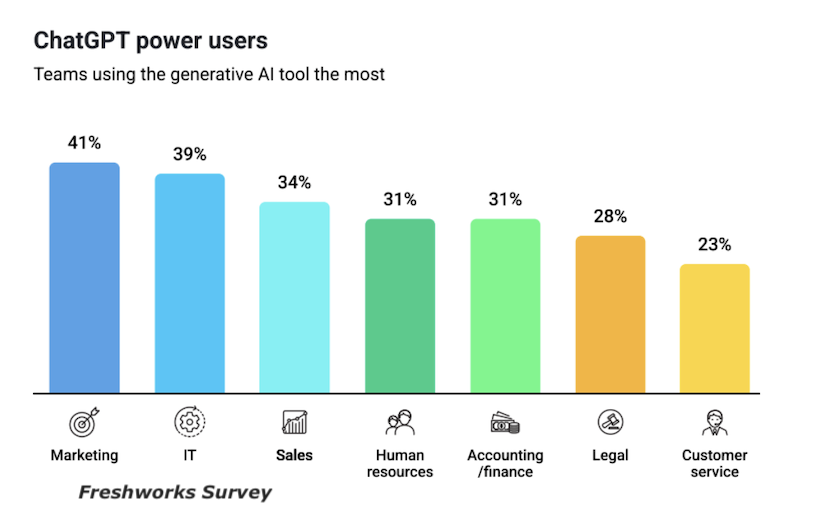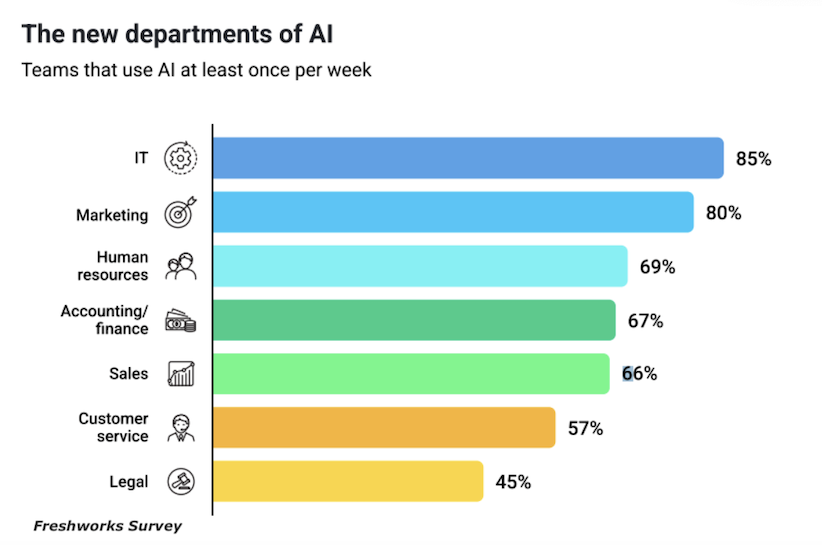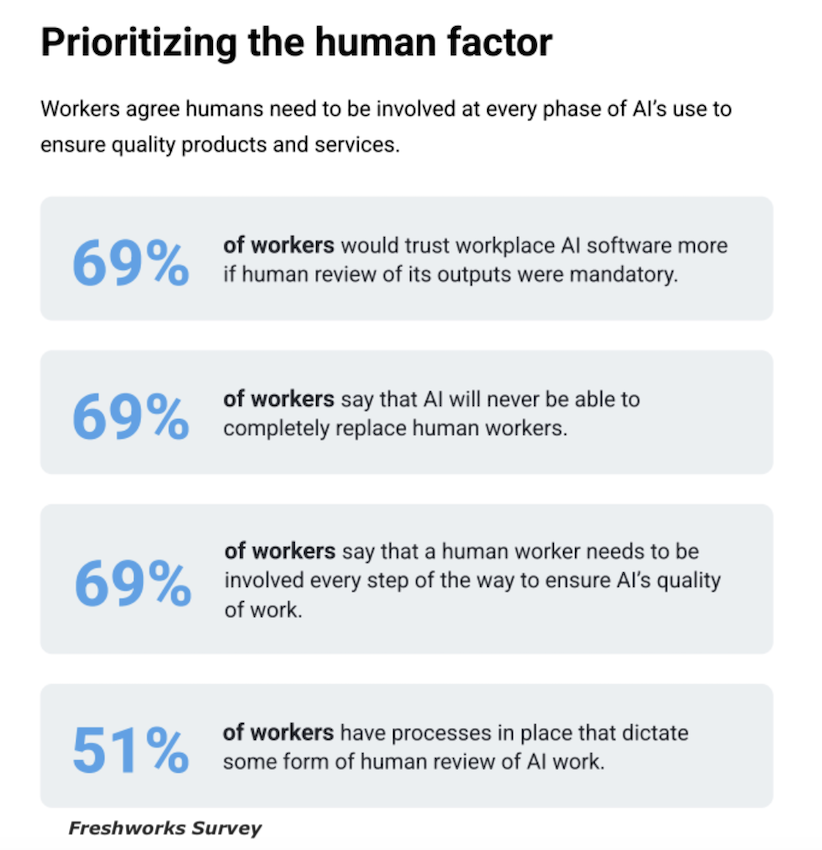Wrapping up a busy week-CPl data confirms what we’ve been saying: inflation is running closer to 2% using realtime rental pricing, and the market is catching up to this idea.
Also, Al adoption data from Freshworks survey shows IT and Marketing still lead in usage, but HR, Finance, and Sales are increasing, while Legal and Customer Service lag. Another stat shows workers overwhelmingly prefer Al with human oversight, reinforcing that Al is an augmenter, not a replacer-which may have major implications for enterprise Al adoption.
On earnings, Zillow and Paycom beat guidance. Paycom expects double-digit growth through Q4, and Zillow is tracking to $5B revenue with 45% margins while keeping fixed costs steady. Both companies show signs of strong execution.
THE DATA
1. 41% of Marketing teams are top Al users; IT follows at 39%.
2. 85% of IT teams use Al weekly; Legal lags at 45%.
- 3. 69% trust Al more with human oversight.
Data #1: AI Power Users

No surprise here. Marketing and IT are leading the AI charge, using it to automate workflows, analyze data, and create faster than ever. But we are now seeing some of HR, Finance, and Sales catch up. That means AI is moving beyond tech teams and becoming a tool for everyday business functions.
On the flip side, Legal and Customer Service are slow to adopt—likely due to compliance risks and the need for more tailored AI tools. That’s an opportunity, atleast that is how we see it at Avory. Companies that build AI solutions designed for these lagging industries could see bigger future gains as adoption picks up.
Who’s using AI the most?
- Marketing (41%) and IT (39%) are still the biggest AI users.
- Sales (34%), HR (31%), and Accounting/Finance (31%) are seeing steady growth.
- Legal (28%) and Customer Service (23%) are still behind but could be the next wave of adopters.
Data #2: AI is Now a Weekly Tool Across Departments

AI isn’t just a fun experiment anymore—it’s becoming a habit, something we look for in investments. We all know it is hard to break habits. Similar to last datapoint, IT and Marketing teams use AI heavily.
The laggard? Legal, once again. With just 45% of teams using AI weekly, it’s clear that compliance-heavy industries are slower to adapt, which is normal when innovation strikes. We still think AI-driven automation in contracts, document review, and legal workflows is a space ripe for disruption.
How often teams use AI:
- IT (85%) and Marketing (80%) use AI at least once per week.
- HR (69%), Finance (67%), and Sales (66%) are catching up.
- Customer Service (57%) and Legal (45%) are playing catch-up but could be next.
Data #3: The Human Factor in AI Adoption

Here’s something interesting and I think balances the conversation we showed in last two newsletters, along with last two datapoints—people actually want AI, but only if there’s human oversight. That tells us one thing: trust is everything.
AI tools that explain their decisions, have built-in auditing, and keep humans in the loop will win in the long run, at least our view. Fully automated, black-box AI? That’s going to struggle. The biggest opportunities could be in hybrid AI solutions, where AI enhances human decision-making instead of replacing it.
This is especially true for regulated industries like finance, healthcare, and legal, where compliance and explainability are non-negotiable. Expect to see more investment in AI trust and governance as companies figure this out.
Workers want AI—but with human oversight:
- 69% say they trust AI more if human review is mandatory.
- 69% believe AI will never fully replace human workers.
- 51% say they already have processes in place for human AI review.
Twitter: @_SeanDavid
The author and/or his firm have positions in the mentioned companies and underlying securities at the time of publication. Any opinions expressed herein are solely those of the author, and do not in any way represent the views or opinions of any other person or entity.







